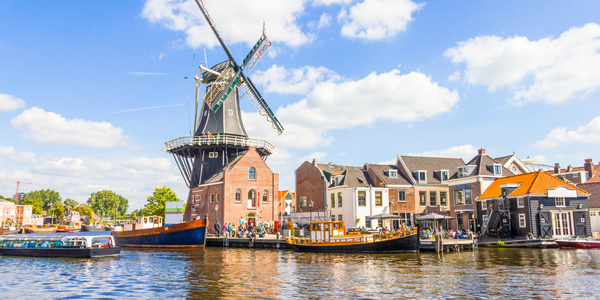Customer Company Size
Large Corporate
Region
- America
Country
- United States
Product
- ICONICS GENESIS32™
- AlarmWorX32™ Multimedia
- ReportWorX™
- WebHMI™
- OPC UA Server
Tech Stack
- HMI/SCADA
- PLCs
- Radio Communications Systems
Implementation Scale
- Enterprise-wide Deployment
Impact Metrics
- Cost Savings
- Productivity Improvements
Technology Category
- Application Infrastructure & Middleware - API Integration & Management
- Automation & Control - Automation & Process Control Systems
Applicable Industries
- Cities & Municipalities
Applicable Functions
- Facility Management
- Maintenance
Use Cases
- Building Automation & Control
- Process Control & Optimization
- Water Utility Management
Services
- System Integration
About The Customer
The Historic City of Grapevine is located in the DallasFort Worth area in North Texas and boasts both exciting city life and beautiful countryside. The City of Grapevine has a population of approximately 50,000 people and is one of the oldest settlements in the Lone Star State. The city staff realized the need to replace their existing HMI/ SCADA, PLCs and radio communications systems or do a serious upgrade. The City of Grapevine’s needs, as a city, were growing and they needed a system better able to handle a diverse and multifaceted infrastructure.
The Challenge
The City of Grapevine, located in the DallasFort Worth area in North Texas, realized the need to replace or upgrade their existing HMI/ SCADA, PLCs and radio communications systems. Their needs as a city were growing and they required a system better equipped to handle a diverse and multifaceted infrastructure. Additionally, they were also faced with the potential of the FCC narrow banding their frequency, which would affect the reliability and functionality of their existing PLCs, communications and stability of their current system as a whole. This set of needs started the journey to find the best option for Grapevine.
The Solution
After an initial evaluation process, the City of Grapevine decided that ICONICS GENESIS32™, AlarmWorX32™ Multimedia, ReportWorX™, WebHMI™ and an OPC UA Server were the best ways to go for this project. The city, along with the assistance of ICONICS’ representative PCD Sales, selected the ICONICS software package based on high ratings on functionality, price, renewal options, local vendor knowledge and customer support. The City Staff developed a process for monitoring their assets utilizing ICONICS HMI/SCADA software for their water treatment plant and its lift stations. City staff evaluated the screen designs from the existing system and repurposed those as templates for the new ICONICS screens. After this, they started expanding the ICONICS program to include chemical feed screens and others not part of the original system.
Operational Impact
Quantitative Benefit

Case Study missing?
Start adding your own!
Register with your work email and create a new case study profile for your business.
Related Case Studies.

Case Study
Turning A Stadium Into A Smart Building
Honeywell created what it called the “intelligent system” for the National Stadium in Beijing, China, turning the venue for the opening and closing events at the 2008 Summer Olympics into a “smart building.” Designed by highly controversial artist Ai Weiwei, the “Bird’s Nest” remains one of the most impressive feats of stadium architecture in the world. The 250,000 square meter structure housed more than 100,000 athletes and spectators at a time. To accommodate such capacity, China turned to Honeywell’s EBI Integrated Building Management System to create an integrated “intelligent system” for improved building security, safety and energy efficiency.
.png)
Case Study
Smart Street Light Network (Copenhagen)
Key stakeholders are taking a comprehensive approach to rethinking smart city innovation. City leaders have collaborated through partnerships involving government, research institutions and solution providers. The Copenhagen Solutions Lab is one of the leading organizations at the forefront of this movement. By bringing together manufacturers with municipal buyers, the Copenhagen Solutions Lab has catalyzed the development and deployment of next-generation smart city innovations. Copenhagen is leveraging this unique approach to accelerate the implementation of smart city solutions. One of the primary focus areas is LED street lighting.

Case Study
Buoy Status Monitoring with LoRa
The Netherlands are well-known for their inland waterways, canals, sluices and of course port activities. The Dutch Ministry of Infrastructure indicates that there are thousands of buoys and fixed items in and near water environments that would profit from IoT monitoring. One of the problems with buoys for example, is that they get hit by ships and the anchor cable breaks. Without connectivity, it takes quite some time to find out that something has happened with that buoy. Not to mention the costs of renting a boat to go to the buoy to fix it. Another important issue, is that there is no real-time monitoring of the buoys at this moment. Only by physically visiting the object on the water, one gains insight in its status.

Case Study
Barcelona Case Study
Barcelona’s heavy traffic and its associated high levels of pollution were the primary factors that motivated some companies and universities to work on strategies for improving traffic in the city centre. Bitcarrier is one of the technologies involved in the In4Mo Project, whose main objective is to develop the applications that form the core of smart mobility, one of the fundamental pillars of the smart city concept.

Case Study
China Mobile Smart Parking
Smart Parking, powered by NB-IoT technology, is making it easier for drivers to find free parking spots. Cities can better manage their parking assets and maximize the revenue available to them as a result. Drivers searching for parking create congestion and pollution by circling and hunting for available parking. Smart Parking services are able to significantly ease these problems by guiding a driver directly to a parking space.







